The Everest Base Camp Trek presents an intriguing opportunity for adventurers seeking both natural beauty and culture. Spanning 13 days, it guides trekkers through the awe-inspiring Himalayas, culminating at a staggering altitude of 5,364 meters. Along the way, they’ll encounter vibrant Sherpa villages and serene monasteries, all while taking in breathtaking views from iconic spots like Kala Patthar. However, understanding the essentials for a successful trek is crucial. What vital preparations should trekkers consider before embarking on this unforgettable journey?
Key Points
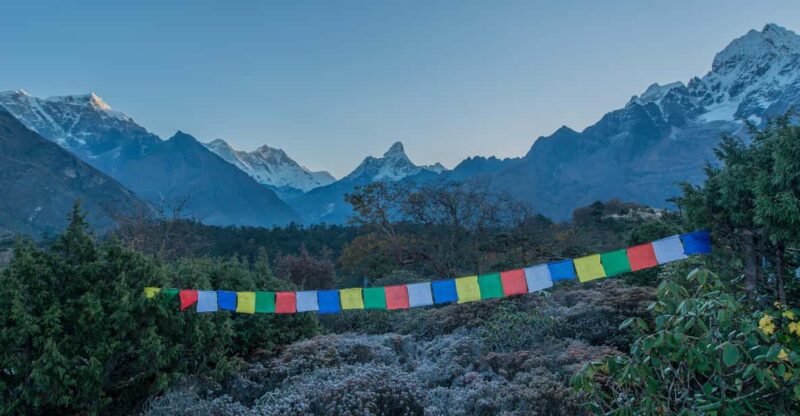
- The Everest Base Camp Trek is a 13-day journey that reaches an altitude of 5,364 meters, offering stunning views of the Himalayas.
- It includes culture in vibrant Sherpa villages like Namche Bazaar and visits to significant sites such as the Tengboche Monastery.
- Highlights of the trek are the sunrise hike to Kala Patthar for panoramic views of Everest and the experience of Sherpa hospitality.
- Accommodation is provided in teahouses, with three meals a day and safe drinking water included for trekkers.
- Moderate fitness is required, and essential packing includes trekking boots, warm clothing, and a high-quality sleeping bag for cold temperatures.
Overview of the Trek
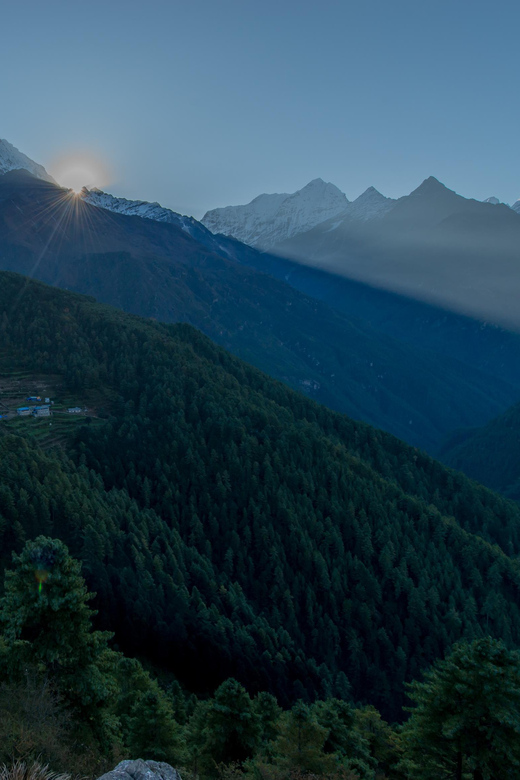
The Everest Base Camp Trek offers adventurers a thrilling 13-day journey through the breathtaking landscapes of the Everest Region, reaching an altitude of 5,364 meters while seeing rich Sherpa culture and history.
This trek, well-known for its stunning views and challenging terrain, allows trekkers to experience the spirit of the Himalayas firsthand.
With highlights like Kala Patthar and the iconic Everest Base Camp, travelers also get to explore vibrant Sherpa villages and visit the serene Tengboche Monastery.
The trek not only tests physical endurance but also provides a unique opportunity to witness the legacy of climbing legends, like Sir Edmund Hillary and Tenzing Norgay Sherpa, who first conquered Everest in 1953.
You can also read our reviews of more hiking tours in Lukla
Itinerary and Main Stops

Trekkers can expect a carefully crafted itinerary that includes significant stops like the Lukla flight, scenic hikes to Kala Patthar, and visits to charming Sherpa villages and Buddhist monasteries. This trek offers a blend of adventure and cultural exploration, ensuring a memorable experience.
-
Lukla Flight: Kick off the journey with a thrilling flight to the gateway of Everest.
-
Kala Patthar: Ascend to this iconic viewpoint for breathtaking panoramas of Everest and surrounding peaks.
-
Sherpa Villages: Immerse in local culture by exploring villages like Namche Bazaar and Tengboche.
-
Buddhist Monasteries: Visit serene monasteries where trekkers can reflect and appreciate the spiritual essence of the region.
Each stop enriches the trek, creating an unforgettable adventure in the majestic Himalayas.
Trekking Experience Highlights
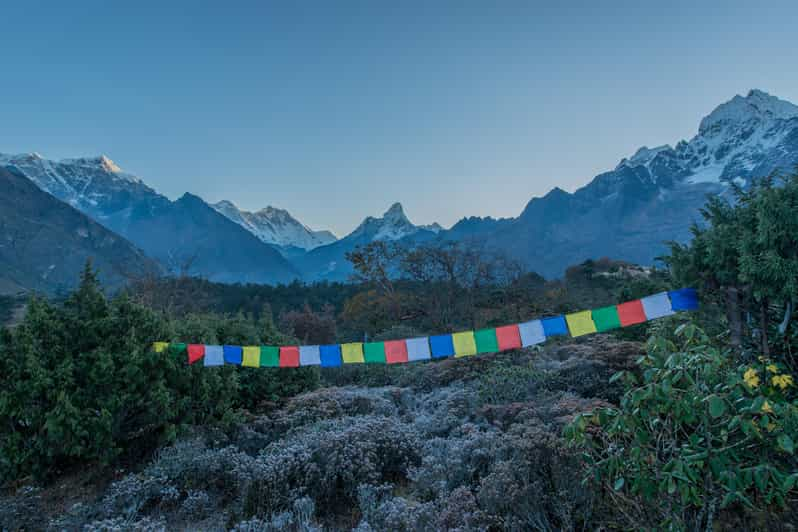
Experiencing the Everest Base Camp Trek offers adventurers a unique blend of stunning landscapes, rich Sherpa culture, and the thrill of standing at the foot of the world’s highest peak.
Along the journey, trekkers encounter breathtaking views of iconic mountains like Mt. Everest, Lhotse, and Makalu, making every step worthwhile.
They’ll traverse through vibrant Sherpa villages, each showcasing warm hospitality and unique traditions.
The trek also includes a visit to the magnificent Tengboche Monastery, where trekkers can enjoy spiritual serenity.
Hiking to Kala Patthar at sunrise reveals a spectacular panoramic view of the Everest massif.
Wildlife sightings, such as the elusive Musk Deer and colorful Danphe, add an exciting touch to this unforgettable adventure.
Inclusions for Travelers
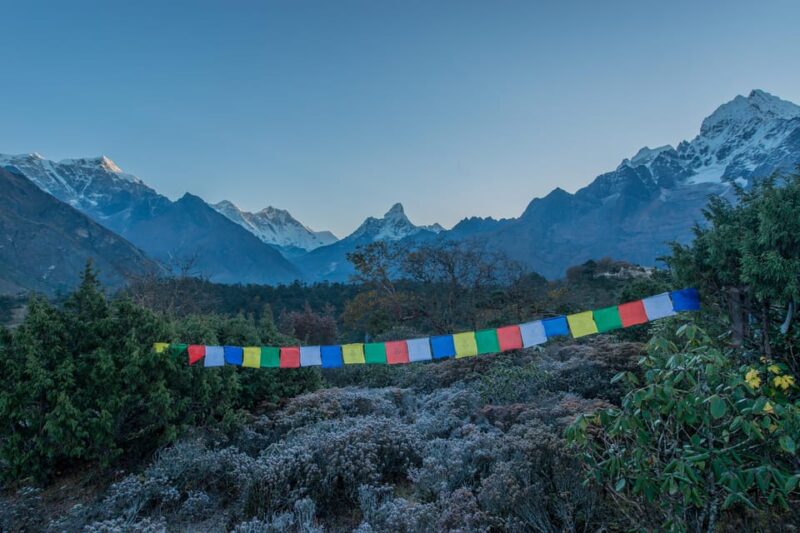
Travelers can expect a comprehensive package that includes essential trekking permits, a TIMS card, and the services of experienced guides and porters to enhance their journey. These inclusions are designed to ensure a smooth and enjoyable trek, allowing travelers to focus on the breathtaking scenery and cultural experiences.
With these thoughtful inclusions, trekkers can embark on their adventure with confidence, knowing they’ve the necessary support and resources throughout their journey to Everest Base Camp.
-
Accommodation in teahouses along the trail
-
Three nutritious meals per day to fuel the trek
-
Safe drinking water to stay hydrated
-
First aid kit and emergency evacuation services for peace of mind
Exclusions to Consider
It’s important to keep in mind that while the trek includes many essentials, there are significant exclusions that participants should budget for.
First, international airfare and Nepalese visa fees aren’t included, so trekkers need to account for these costs.
Plus, mandatory travel insurance is crucial, providing coverage for unexpected situations.
Personal expenses like snacks, souvenirs, and laundry also add up, so planning for those is wise.
Tips for guides and porters are customary and should be factored in as well.
Lastly, any additional activities beyond the itinerary, such as sightseeing tours or cultural experiences, will incur extra charges.
Important Travel Information
Understanding the essential travel information can significantly enhance a trekker’s experience on the Everest Base Camp journey. Before setting off, trekkers should keep the following in mind:
-
Free cancellation: Enjoy the flexibility of canceling up to 24 hours prior for a full refund.
-
Reserve now & pay later: Secure your spot without any upfront payment.
-
Fitness requirement: A moderate fitness level is necessary for this trek.
-
Age and mobility restrictions: This trek isn’t suitable for children under 3, wheelchair users, or individuals over 95.
Packing Essentials
Packing for the Everest Base Camp trek requires careful consideration of essential items to ensure comfort and safety throughout the journey.
Trekking boots are vital, providing support and traction on rugged terrain. Warm clothing, including thermal layers and a waterproof jacket, protects against unpredictable weather. A good-quality sleeping bag rated for cold temperatures is also crucial for restful nights.
Don’t forget sunscreen and sunglasses to shield against high-altitude sun exposure. A daypack for snacks and water keeps hikers energized. Plus, carrying a charged smartphone or camera captures the stunning scenery.
Preparation Tips and Guidelines
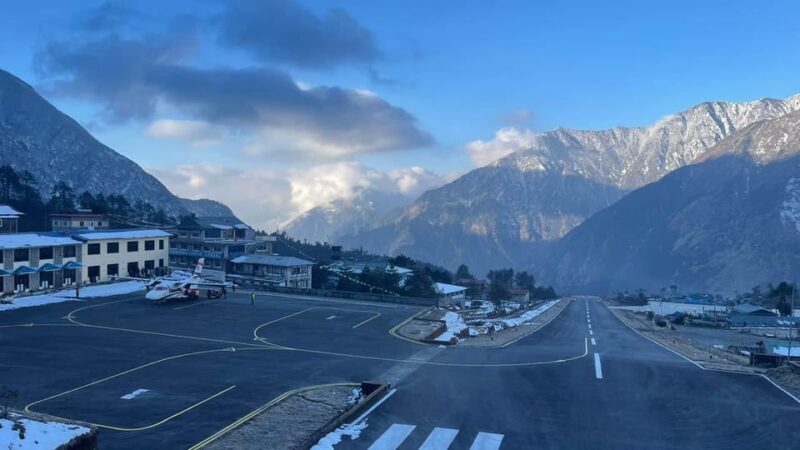
Preparing for the Everest Base Camp trek involves careful planning and a focus on physical fitness to ensure an enjoyable and safe experience in the high-altitude environment. Trekking enthusiasts should consider these preparation tips:
Start training early: Build endurance through hiking, running, and cardio workouts.
Stay hydrated: Drink plenty of water in the weeks leading up to the trek to acclimatize your body.
Learn about altitude sickness: Familiarize yourself with symptoms and how to manage them.
Pack wisely: Include layers for varying temperatures, and don’t forget your first aid kit.
Frequently Asked Questions
What Is the Best Time to Trek to Everest Base Camp?
For optimal trekking conditions, he recommends visiting between late September to early November or March to May. During these months, the weather’s generally stable, offering breathtaking views and a vibrant atmosphere among fellow trekkers.
How Difficult Is the Trek for Beginners?
The trek can be challenging for beginners, requiring moderate fitness and stamina. Gradual acclimatization, proper gear, and following a guide make it manageable, but it’s essential to prepare physically and mentally for the journey ahead.
Are There Any Age Restrictions for Participants?
There’re age restrictions for participants. Generally, children under three can’t join, while those over 95 aren’t eligible. It’s essential for potential trekkers to confirm their age meets the requirements before planning their adventure.
What Type of Food Is Available During the Trek?
During the trek, travelers enjoy a variety of local dishes, including dal bhat, momo, and noodle soup. They’ll also find options for Western meals, ensuring everyone can savor delicious and nourishing food throughout their journey.
Can I Hire a Private Guide for the Trek?
Yes, travelers can hire a private guide for the trek. Many agencies offer personalized services, ensuring a tailored experience. This option provides support, safety, and local insights, enhancing the overall adventure for participants.
Recap
To sum it up, the Everest Base Camp Trek offers an extraordinary blend of natural beauty and rich cultural experiences.
With careful planning and preparation, trekkers can navigate its challenges while soaking in the stunning landscapes and vibrant Sherpa culture.
Whether it’s standing at Kala Patthar or exploring serene monasteries, this adventure leaves a lasting impression.
So, gather your gear, embrace the spirit of adventure, and get ready for an unforgettable journey in the heart of the Himalayas!
You can check availability for your dates here:More Hiking & Trekking Tours in Lukla
More Tour Reviews in Lukla
Not for you? Here's more nearby things to do in Lukla we have reviewed
- Everest Heli Sightseeing Tour
- Mera peak trek
- Everest Base Camp Helicopter Landing Tour from TIA – 1 Day
- Everest Base Camp Trek – 6N/7D
- Nepal: Mera Peak Expedition with Trekking and Climbing
- Everest Scenic Mountain Flight (Review Exclusion Section)
- 16-Day Mera Peak Climbing Expedition
- 9 Best Tours In Lukla
- 24 Best Treks And Hiking Tours In Lukla
- 11 Best Helicopter Flights And Tours In Lukla
- Everest Base Camp Trek
- Kathmandu to Ramechhap Manthali Transfer – Sharing Vehicle
